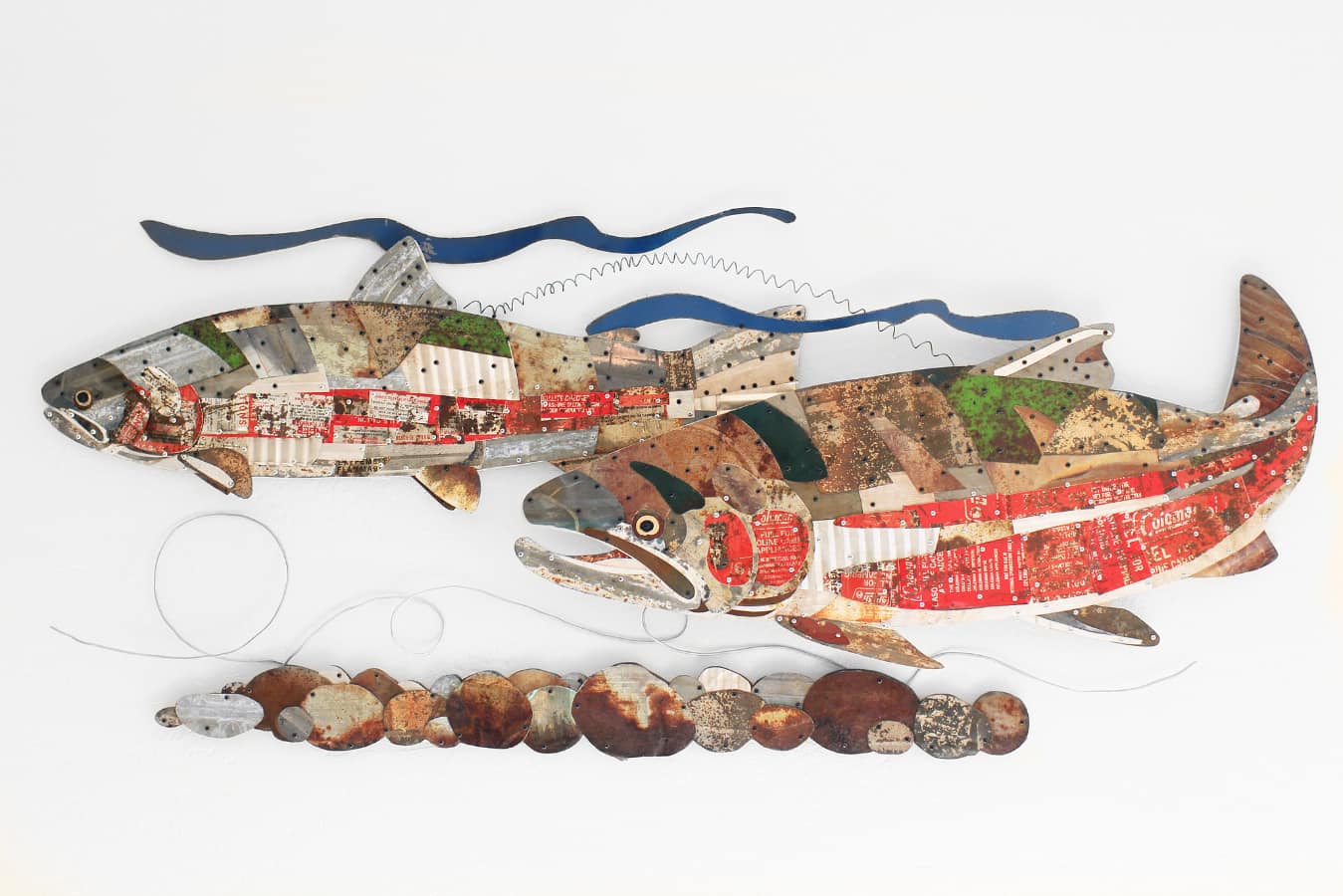Craving Chrome: A Steelheader’s Guide to Glorious Suffering

Art and image by Blake Holgate
Just hearing the word “steelhead” stirs something deep in many fly anglers’ souls. These fish haunt the edges of our minds, ghosting about on the fringes of fantasy like beautiful, unattainable sirens. When an angler catches the steelhead bug, the fish become an obsession—talked about, dreamed about, pursued relentlessly. Vacations are planned around steelhead runs, sick days are burned, and spouses are left standing in doorways in tears—all for a fish. The question is why? What drives so many of us to drop our lives and head to the rivers in pursuit of these creatures? Maybe we don’t even really know.
We can call it the challenge or the mystery, but love is the main motivation behind being a steelheader. We care about these fish, and every time we catch and release one, we wish it well on its journey. Yet we have to ask ourselves whether simply loving these fish is enough. Being a steelheader means sacrificing time, money, and even marriages in their pursuit, but does our love for these beautiful creatures mean we are willing to sacrifice the pursuit itself?
Joining the Club
Being a steelheader is like belonging to some elite secret society, or maybe it’s more like a mental institution. Steelhead are best caught in winter when the rivers are cold enough to mimic their deep ocean habitat—the worst time of year for an angler to be in a river. The water is cold, the weather is rough, and the fish are moody, yet steelhead anglers always return. Hour after hour, day after day, week after week, and year after year, they dwell in the exciting misery that is steelheading.
It takes dedication because we suffer these conditions for fish that may not even be there. Even when we know steelhead are in the river, they likely won’t feel like grabbing a fly. These fickle creatures come to the rivers with one thing in mind—spawning—so they rarely eat while there. Yet we always hope they will, and that hope drives us to don our waders in the chilly bite of dawn and trudge back down to the river for another possibly fishless day.
When you do finally get that grab, it feels like winning some coveted yet deranged trophy. Of course, hooking a steelhead is only half the battle, and once you get the grab, you sit on the edge of panic, wondering what else can go wrong. Yet it’s those moments of dread that we live for. Nothing fights like a fresh-from-the-sea, bright chrome steelhead. It’s like hanging your fly off an overpass and hooking a passing semi. Your reel screams, your rod is nearly torn from your hands, and somewhere impossibly far downstream, a fish leaps into the air with your fly stuck in its mouth. Steelhead fishing may be one of the only angling pursuits where a hooked and lost fish still feels like an accomplishment.
But while we can celebrate losing a single battle with these magnificent fish, losing the war for their survival is unthinkable.
The Growing Dilemma
Modern-day steelheading is a Catch-22. We dedicate countless hours trying to catch these fish, but if we left them alone, there would be more of them. Between dams, fish hatcheries, rising ocean temperatures, and commercial fishing, Pacific steelhead are slowly disappearing, causing anglers to spend more time working to catch just a single fish. It makes the future of steelheading a scary prospect—if the fish vanish from the world, what will being a steelheader even mean?
Perhaps the word “steelheader” will evolve into a badge of honor. It’s the anglers who love to catch them that are currently fighting for their survival. It will be those anglers who take down dams and fish hatcheries, who advocate for protection, and if necessary, will even give up fishing for them because the fish need solitude to recover and repopulate. Every steelheader accepts this, knowing that even when we practice safe handling and catch-and-release, our harassment of a dwindling population—hooking, fighting, and taking countless grip-and-grin pictures—does more harm than good.
If we truly love steelhead and steelhead fishing, we must give up fishing for them in certain places, perhaps everywhere. Yet if we can’t fish for steelhead, what’s the point of trying to save them? We have to think long-term and prioritize the future over the present. Like old men planting trees whose shade they’ll never sit in, we may have to sacrifice our own satisfaction so future generations will still have steelhead in the rivers and get to know our joyful obsession.
Doing What We Can
For me, it all adds up: the days spent in a freezing tent, the endless hours of casting, the frustration, the doubt—all coming to a head in one moment. Those times when I’m kneeling in a river, brushing ice from my beard, holding a fish that has traveled perhaps thousands of miles. A steelhead is a fish who undertook a fantastic journey, traversing the vast blackness of the Pacific alone, eluding predators and leaping waterfalls. Somehow, this fish saw my tiny fly drifting in its vast world and decided to grab it. The fish is sharing a brief moment of its epic saga with me, and it is that instant that keeps me coming back and wanting to share it with others.
If I had to give up steelhead fishing to save the species, ensuring future generations could experience their own shared moments with these magnificent fish, I would do so—begrudgingly but gladly. Hanging up my steelhead rod would hurt, but not fishing would give me more time to help save the species and teach others why steelhead are so important to the world. The riddle of steelhead fishing isn’t answered by just catching fish but in wanting to share the suffering and the love with others.











